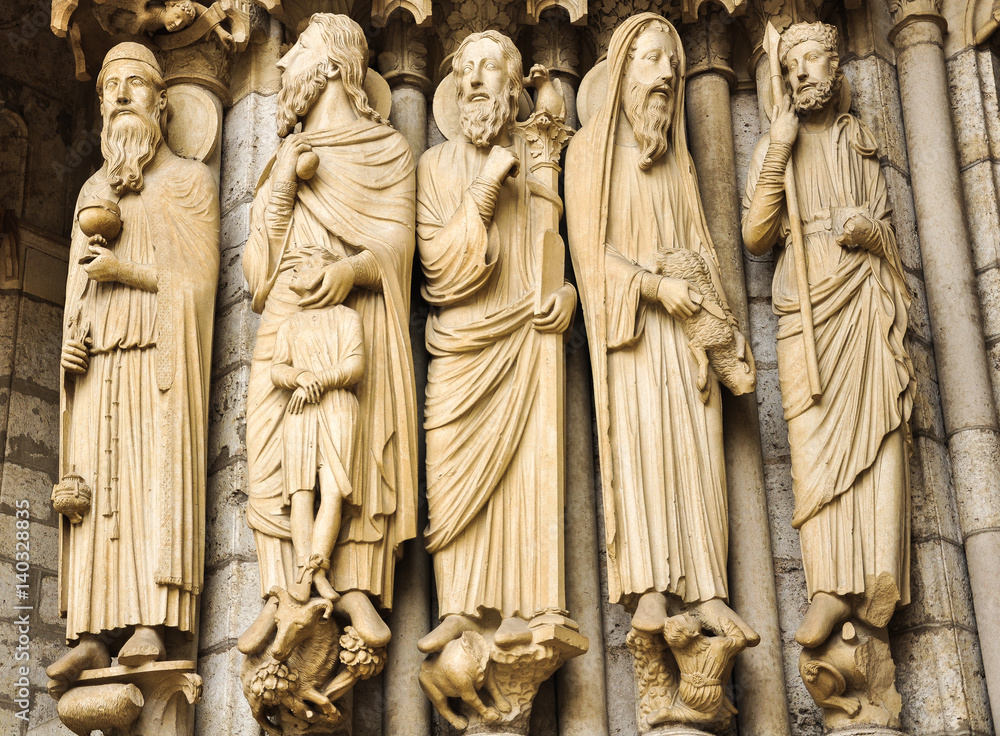If he is guilty, Slovenian ex-Jesuit Markos Rupnik is clearly a pretty trashy guy, but what about his art? It’s junk and here’s why:
First we have to understand what sacred art is supposed to be and do. To do that one has to know a bit about art history.
In the earliest days Christians were wary of creating any religious images for fear of violating the commandment against making “graven images” (Exodus 20:4-5) However, the iconoclasm controversy in the 8-9th centuries clarified Christian teaching. Images were forbidden before the incarnation of Christ because no image of God was possible and pagan attempts to portray their gods were idolatrous. However, once the incarnation took place there was an image of the unseen God i.e. The Lord Jesus Christ. (Col. 1:5) Thereafter images of Jesus and his blessed Mother were permitted–and by extension images of saints who, it is argued–are sub-images of Christ.
A sacred image (icon) therefore pictures Jesus–the image of the unseen God and his mother and the saints. As such these image turn our hearts and minds to God through the physical senses. The second purpose of religious images is to aid our meditation on the events of the gospel.
Sacred art therefore has a unique function: it must somehow communicate the work of grace in the lives of mortals and within the events of human history. It must communicate the interaction of the human and the divine. This is not easy. If the artist is too literal in his representation of the human, it will be merely mundane–no more than a literal and uninspiring illustration. It fails to communicate the divine.
If he is too explicit in his attempts to communicate the divine, the artwork ends up being twee, sentimental, kitsch or spooky. We are all aware of the lady-like Jesus pictures–the Sacred Heart with wavy haired Jesus with what look like plucked eyebrows, blusher, fake eyelashes and a gooey grin. The artist tried to make a human being look otherworldly and holy but only succeeded in making him look pretty and weird. Other attempts to communicate the divine end up with figures who resemble a character from a lurid fantasy comic book: a supernatural alien human hybrid.
On the other hand, some sacred art is so “human” that Jesus and Mary simply look like someone out of a Norman Rockwell or Thomas Kinkade painting. I’m thinking those highly colored Bible story illustrations that show a smiling Jesus in a meadow blessing the little children. The overly literal misses the divine aspect in favor of the human.
The iconographers of the Eastern tradition are most successful in capturing this integration of the spiritual and human in their elongated figures, stylized gestures and traditional compositions. This style evolved in the West, first in low relief and mosaics and reached its summit in the Romanesque and early Gothic like the carvings at Chartres (illustrating this post). The sublime majesty of these works are the epitome of sacred art. They communicate perfectly the power of the divine infused into humanity.
The sacred art of the Renaissance and Baroque ages has its own strengths and weaknesses, but in all the art of these periods one senses the struggle of the artist: “How do I communicate the grace of God active and powerful in the lives of ordinary people?”
This brings me to the art of Markos Rupnik. His bowed figures and rubbery gestures are insubstantial. They fail to communicate the solidity and dignity of the human form. With their mask like solemn faces they do not communicate the infusion of divine grace, but a kind of disconcerting despair. He may have attempted solemnity. He communicates a dour burdensomeness. Are the big eyes supposed to communicate innocence? Purity? Spiritual awareness? They are reminiscent of the ceremonial masks of primitive pagan cultures or the grotesque fragmentation of the human form in cubism.
I’m not one to necessarily advocate the removal of art because of the depravity of the artist. Little sacred art would be spared. However, when the artist is also a priest and his alleged crimes are so horrendous, his artwork is his signature and his signature implies his presence. Best that his artwork is gone–not just because it reminds us of him, but also because it’s a failure as Christian sacred art.







Leave A Comment
You must be logged in to post a comment.